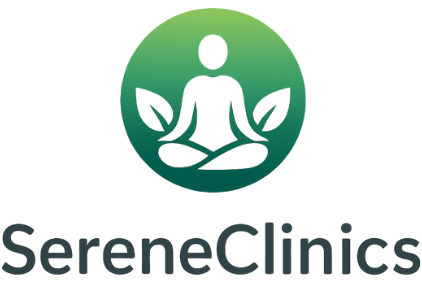Naturopathy Practices: Top Techniques and Therapies
Naturopathy is a growing approach to health that focuses on the body’s natural healing abilities.
By focusing on prevention and addressing the root causes of illness, naturopathy integrates a variety of techniques and therapies, including herbal medicine, nutrition, and mind-body practices.
This article explains what naturopathy is, how it functions, its main principles, and its benefits.
It also discusses potential risks and how to find a qualified naturopathic practitioner.
Learn how this natural healing approach can improve your well-being well-being and empower you on your health journey.
Key Takeaways:
Contents
- 1 What is Naturopathy?
- 2 How does Naturopathy work?
- 3 What are the Key Principles of Naturopathy?
- 4 What are the Top Techniques Used in Naturopathy?
- 5 Naturopathy Techniques Statistics
- 6 What are the Benefits of Naturopathy?
- 7 What are the Risks and Side Effects of Naturopathy?
- 8 How to Choose a Qualified Naturopathic Practitioner?
- 9 Frequently Asked Questions
- 9.1 What are some common techniques used in naturopathy practices?
- 9.2 What is herbal medicine and how is it used in naturopathy practices?
- 9.3 How does acupuncture work in naturopathy practices?
- 9.4 What is nutrition therapy and how does it play a role in naturopathy practices?
- 9.5 What is hydrotherapy and how is it used in naturopathy practices?
- 9.6 How does lifestyle counseling play a role in naturopathy practices?
What is Naturopathy?

Naturopathy is an approach to health care that highlights the body’s natural ability to heal. It uses different treatments like nutrition advice, plant-based remedies, and homeopathic medicine.
Founded on ideas from people like Benedict Lust and Sebastian Kneipp, naturopathy looks at the entire person, not just the illness symptoms. This method supports natural childbirth and uses treatments like water therapy and mind-body medicine to keep people healthy and prevent illness, as detailed by Wikipedia.
How does Naturopathy work?
Naturopathy uses various treatments by considering each person’s medical history to support the body’s natural healing and improve health.
Naturopathic doctors look at health issues by considering the whole person, including their emotions, lifestyle, and surroundings, to create treatment plans that suit the individual.
These plans might include vitamins, herbal treatments, and physical therapies to improve blood circulation and aid recovery.
What are the Key Principles of Naturopathy?
Key ideas in Naturopathy include nature’s ability to heal, preventing illness, and focusing on the whole person, which is central to naturopathic practice.
By recognizing how body functions are linked, naturopathic practitioners use natural treatments and lifestyle changes to aid recovery and promote good health. This approach deals with physical problems and also considers emotional and environmental factors that affect health. According to ScienceDirect, integrative physiology is a critical component of traditional naturopathic practice, reflecting the interconnectedness of bodily functions and holistic health principles. For an extensive analysis of holistic health trends, our comprehensive study of holistic health explores the impact of naturopathic practices on overall well-being.
What are the Top Techniques Used in Naturopathy?
The main methods in Naturopathy include herbal medicine, hydrotherapy, acupuncture, and nutrition. These methods encourage the body’s natural healing. As mentioned in our discussion on manual acupuncture techniques, acupuncture can play a significant role in promoting natural health.
Naturopathy focuses on bringing back balance and improving health. Naturopathic doctors often use physical treatments and mind-body therapies to address both physical and emotional problems, helping the healing process.
Naturopathy Techniques Statistics
Naturopathy Techniques Statistics
Recent trends in the use of herbal and other natural products have been thoroughly explored by JAMA Internal Medicine.
Naturopathy Growth and Utilization: Usage in U.S. Adults
The data on Naturopathy Techniques Statistics highlights the growth and utilization of naturopathy among U.S. adults over two decades. This data shows that more people in the United States are starting to use alternative medicine practices.
Naturopathy Growth and Utilization reflect a noticeable rise in the use of naturopathic techniques. In 2002, the usage among U.S. adults was recorded at 0.2%. By 2022, this figure had increased to 1.3%. Although it remains a small percentage of the population, the growth represents more than a sixfold increase in adoption over twenty years.
- This increase is due to a few reasons: more people are interested in natural wellness, healthcare costs are going up, and more people accept complementary and alternative medicine (CAM).
- More people are now choosing naturopathy because it focuses on natural healing and prevention, which may indicate a change in how people approach health, favoring methods that combine different treatments.
The data presents an opportunity for naturopathy practitioners and educators to further engage with the public, promoting the benefits of naturopathic techniques and integrating them into traditional healthcare systems. As more people become aware and interested, it will be more important to have rules, standard practices, and education in the field to keep it safe and effective.
Overall, the increased use of naturopathy shows a move towards alternative medicine and indicates possible areas for expansion and incorporation within the wider healthcare system.
1. Herbal Medicine
Herbal medicine, a key part of naturopathic practice, uses plant-based treatments to address different medical issues and support health.
Practitioners carefully choose herbal treatments by looking at each patient’s specific needs, including their medical history, present health issues, and how they live.
This customized method makes sure people get herbs that address their particular issues, improving health outcomes.
For example, a person with anxiety might be given herbs that help calm them, while someone with digestive problems might benefit from herbs that help with digestion.
These herbal treatments are often combined with other natural methods, such as changing diet, exercising, and practicing mindfulness, to create a balanced and complete healing plan that promotes general health and wellness.
2. Nutrition and Diet Changes

Nutrition and diet changes are important parts of naturopathic medicine, where clinical nutrition is focused on improving health outcomes through customized dietary changes.
By focusing on whole foods and an individualized approach, practitioners highlight how the right nutritional choices can support the body’s natural healing processes. This belief matches the idea that food acts as medicine; nutrients from a balanced diet can strengthen the immune system, lower inflammation, and support general health.
Using nutritional supplements properly can correct gaps in nutrition, stop illness, and support well-being. Nutritional counseling is a key tool, helping people control their health and make choices that match their specific needs.
3. Hydrotherapy
Hydrotherapy involves the use of water treatments to facilitate detoxification and support the healing process, utilizing the therapeutic properties of water in various forms.
This flexible method can include various options like warm baths, cold compresses, or steam inhalation, each suited to handle particular health issues.
For example, warm hydrotherapy baths can help alleviate muscle tension and promote relaxation, while cold applications can reduce inflammation and swelling.
Beyond physical ailments, it also promotes mental well-being by creating a calming effect, aiding individuals dealing with stress and anxiety.
When used alongside other natural treatments like herbal medicine or acupuncture, hydrotherapy improves health results by creating conditions that support the body’s self-healing process.
4. Acupuncture
Acupuncture techniques, rooted in Traditional Chinese Medicine, focus on stimulating specific points in the body to promote body healing and alleviate stress management.
This method restores balance and supports the body’s natural functions, making it a significant element of Naturopathy.
Practitioners use different therapy methods, like inserting needles and electroacupuncture, to treat many issues, including ongoing pain, stomach problems, anxiety, and sleep troubles.
These approaches promote energy movement and better blood circulation, which benefits both physical and emotional health, focusing on how different parts of the body are linked.
5. Physical Manipulation
Physical manipulation involves different methods used in physical medicine to help the body heal and improve health through specific adjustments and treatments.
These methods, which may include chiropractic adjustments, osteopathy, and different types of massage therapy, work to bring back balance and proper function within the body.
These techniques focus on correcting misalignments, increasing blood flow, and reducing muscle tightness, which helps ease pain and support general health and energy.
Adding physical treatment methods to naturopathy shows its importance in patient care that considers the entire person, not just specific symptoms.
Patients often feel more energetic, move more easily, and generally feel better, which fits well with the naturopathic approach of supporting the body’s natural ability to heal.
6. Mind-Body Therapies
Mind-body therapies in Naturopathy focus on linking emotions and physical health, using methods that encourage relaxation and help manage stress.
These treatments use different practices like meditation, guided visualization, and deep breathing exercises to help people find calmness and stability.
By focusing on the interplay between thoughts and bodily sensations, these methods encourage individuals to develop greater self-awareness and resilience in the face of life’s challenges. Many experts believe that reducing emotional stress improves mood and helps the body recover, leading to better physical health.
Using these mind-body methods in Naturopathy promotes a complete approach to health, helping people manage their own well-being.
What are the Benefits of Naturopathy?
Naturopathy helps by addressing the primary reasons for health issues, strengthening the immune system, and enhancing general well-being.
Naturopathic practitioners encourage patients to be active in their healing through natural treatments and lifestyle changes. Related insight: Naturopathic Practice: State Regulations, Registration, and Requirements
By looking at both the physical and emotional parts of health, Naturopathy promotes a complete approach to wellness.
1. Treating the Root Cause
One of the main benefits of Naturopathy is that it focuses on treating the underlying cause of health problems instead of only dealing with symptoms, which is essential for effective disease management.
By examining the root causes of a person’s health problems, practitioners of this approach improve the results of treatments and support lasting health.
This method gives patients a customized experience by taking into account their individual medical history, daily routines, and emotions. As a result, patients often report greater satisfaction and improved outcomes.
Focusing on natural treatments and lifestyle changes helps the body heal itself, leading to a more lasting and strengthening recovery.
2. Boosting the Immune System

Naturopathy helps strengthen the immune system with lifestyle changes, dietary supplements, and plant-based treatments.
By integrating whole foods into daily diets, practitioners focus on enhancing the body’s defenses against illnesses. Incorporating a variety of vegetables, fruits, and whole grains can provide essential vitamins and minerals that support immune function.
The use of herbal remedies, such as echinacea and elderberry, offers natural anti-inflammatory properties that can further strengthen immunity. Regular exercise and enough sleep are important for building a strong immune system.
Reducing stress through techniques like mindfulness and yoga can improve overall well-being and help the body combat infections more effectively.
3. Improving Overall Health and Well-being
Naturopathy improves health by providing personalized treatments for both body and mind.
Professionals in this area pay attention to each person’s specific needs and create custom treatment plans. These plans might combine herbal medicines, diet suggestions, and changes in daily habits.
Naturopathic medicine looks at the whole person, considering emotional and psychological factors along with physical symptoms.
This approach helps reduce health problems and creates a strong foundation for long-term wellness. This helps patients take control of their health, using methods that promote balance and vitality in daily life.
What are the Risks and Side Effects of Naturopathy?
While Naturopathy has different benefits, it’s important to know about the risks and side effects linked to alternative medicine. The field lacks regulation and standardization, which can cause possible interactions with usual medications (our Holistic Health category provides detailed insights).
This might also delay patients from getting needed medical treatment. Naturopathic doctors should manage these risks to offer safe and effective care.
1. Lack of Regulation and Standardization
A significant concern regarding Naturopathy is the lack of regulation and standardization, which can affect patient safety and the efficacy of treatments.
When there are no clear rules and guidelines, it leads to confusion, causing differences in the skills and knowledge of professionals. This can be dangerous for patients looking for different care options.
Without clear guidelines, people might face treatments that are not backed by evidence or involve doubtful methods, which could hurt the reputation of Naturopathy as a real healthcare choice.
It’s very important to have strict rules in place, as they make sure that professionals follow clear guidelines, protecting patients and ensuring that treatments are effective and based on science.
By creating clear rules, the practice can build trust with patients and the larger healthcare community.
2. Potential Interactions with Conventional Medications
Possible interactions between natural treatments and regular medications can happen. It’s important for naturopathic practitioners to review patient history to reduce risks.
This thorough evaluation helps find any current allergies or sensitivities and encourages teamwork in patient care.
Improved communication between naturopathic doctors and other healthcare professionals can significantly impact treatment results by ensuring that all treatment methods are coordinated. By exchanging information and discussing the overall health of a patient, doctors can make better choices that improve treatment success and lower the risk of negative side effects.
Cooperating is important to create a safe environment where patients receive excellent care through various healthcare methods.
3. Delay in Getting Needed Medical Care
A risk of Naturopathy is that it might cause delays in getting needed medical care, especially for serious health problems that need quick action.
This delay can lead to complications that might have been preventable with timely interventions from conventional medicine. Conditions such as infections, tumors, or cardiovascular issues may worsen significantly if not addressed with the appropriate urgency.
While naturopathic methods can provide support and whole-body care, it’s important to understand that combining these with traditional medical treatment can improve health results.
Patients often benefit from a well-rounded approach to health care that acknowledges the advantages of both treatment methods. This makes sure that important symptoms requiring a doctor’s care are noticed.
How to Choose a Qualified Naturopathic Practitioner?
Choosing a knowledgeable naturopathic doctor is important to make sure you get safe and effective care. You should check their education, qualifications, and experience in naturopathic medicine.
Look for licensed Naturopathic Physicians who follow the standards of respected groups like the American Association of Naturopathic Physicians. It’s important that the doctor shares your values of patient care for good health results.
Frequently Asked Questions

What are some common techniques used in naturopathy practices?
Some common techniques used in naturopathy practices include herbal medicine, acupuncture, nutrition therapy, hydrotherapy, and lifestyle counseling.
What is herbal medicine and how is it used in naturopathy practices?
Herbal medicine, also known as botanical medicine, is the use of plant-based substances to promote healing and prevent illness. It is often used in naturopathic treatments to address specific health concerns.
How does acupuncture work in naturopathy practices?
Acupuncture is based on the belief that energy, known as qi, flows through the body along specific pathways. Acupuncturists insert thin needles into specific points along these pathways to balance the flow of qi and support healing.
What is nutrition therapy and how does it play a role in naturopathy practices?
Nutrition therapy focuses on using food as medicine to support overall health and address specific health concerns. Naturopathic practitioners may use nutrition therapy to help patients achieve a well-balanced diet and address nutrient deficiencies.
What is hydrotherapy and how is it used in naturopathy practices?
Hydrotherapy, or water therapy, involves using water in various forms to promote healing and relieve symptoms of illness. This can include hot and cold compresses, saunas, steam baths, and hydrotherapy baths.
How does lifestyle counseling play a role in naturopathy practices?
Lifestyle counseling involves working with patients to make positive changes in their daily habits and routines, such as diet, exercise, sleep, and stress management. This can be an important aspect of naturopathic treatment as it addresses the root causes of many health issues.

Sheetal Sharda has a background in CS. She got an interest in Holistic living back in 2018, and has since started exploring more into Naturapathy, Holistic Living, Yoga, and more. She got inspired to start SereneClinics to help people find reliable centers across the world.






